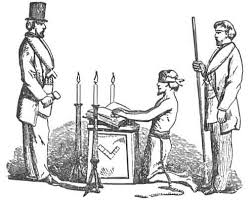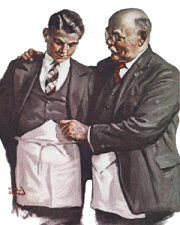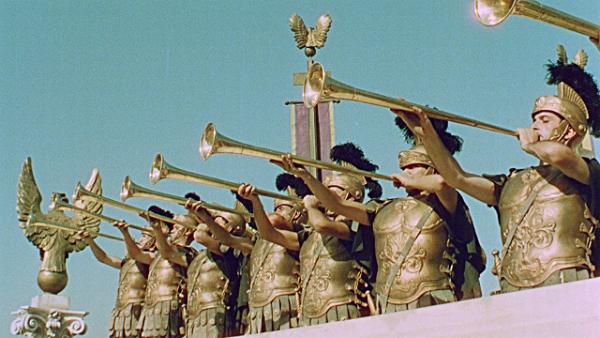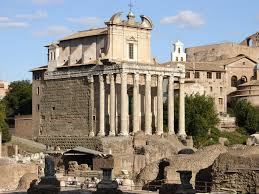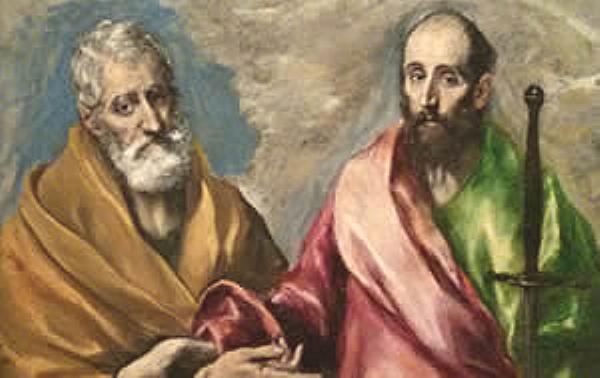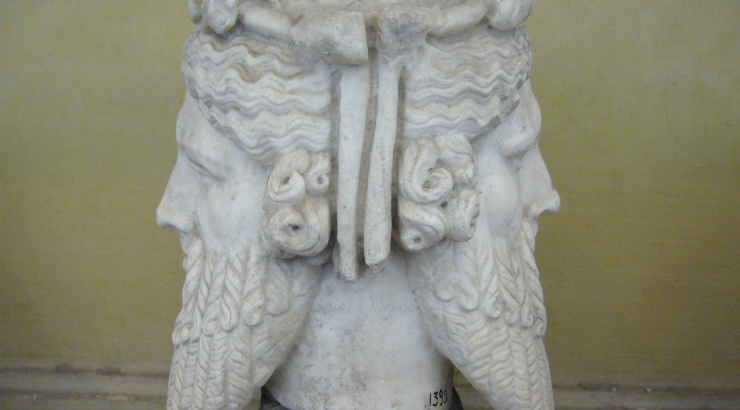Masonic research can be divided into two main groups: the mainstream one that prefers a strict academic approach that considers 1717 as the official beginning of Freemasonry; and that which is mystical and prefers a spiritual approach, connecting Freemasonry with the Ancient Mysteries, Egypt, the Templars, Gnosticism, Alchemy and other spiritual and initiatic traditions.
Two examples of the former are the Quatour Coronatorum Lodge of Research, probably the most famous Lodge of Research at present, and the Bristol Masonic Society. Two examples of the latter are the Cornerstone Society and the 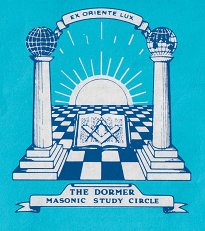 Dormer Masonic Study Circle. Their esoteric approach is maybe not to everyone’s taste; however it is without doubt that their papers are hugely interesting and thought-provoking to say the least.
Dormer Masonic Study Circle. Their esoteric approach is maybe not to everyone’s taste; however it is without doubt that their papers are hugely interesting and thought-provoking to say the least.
Perhaps for fear of being perceived as a religious Organisation – which we absolutely are not – Freemasonry publicly tends to underline the charitable, social and moral sides but never the spiritual one which should really be its fulcrum.
As Bro Darren Lorente states in his paper called “The spiritual dimension of Freemasonry” : We cannot deny the fact that our ritual is full of spiritual references and compels us to reach out to God and to acquire self-knowledge and self-improvement. These are spiritual quests. Unless we really absorb the meaning of the ritual, we will just be a club like any other with the sole difference of having some particular eccentricities, i.e. wearing aprons and sashes. Will we not be doing ourselves and the candidates that follow us a disservice by ignoring the spiritual dimension of Freemasonry? I somehow think this will be the case”.
There are wealth of documents in existence and coincidences which are far too consistent not to be considered seriously. Although we do not have definitive proof about how much older than 1717 we really are, research is quite strongly indicating that our history is very ancient indeed and most likely connected to spiritual traditions as far back as the Ancient Mysteries.
The Ancient Mysteries promoted self-improvement and self-knowledge. They required initiation. They had degrees to be obtained progressively. It was a journey of the spirit, a “journey towards light, as the Masonic writer Julian Rees calls it.
Or, as the influential Masonic writer Walter Leslie Wilmshurst described it:
These mysteries were formerly taught (…) in circumstances of the greatest seclusion and secrecy (. . .) All the great teachers of humanity, Socrates, Plato, Pythagoras, Moses, Aristotle, Virgil, the author of the Homeric poems and the great Greek tragedians, along with St John (…) were initiates of the Sacred Mysteries.
The Greek historian Plutarch, a Mystery initiate himself, describes how the candidate was left in complete and utter darkness. At the end of this darkness period, the initiate would receive a heavy blow to the forehead to open up his skull and set the spirit free.
The oldest known Masonic text in existence is The Halliwell Manuscript, or Regius Poem, written between 1390 and 1425.The Regius Poem ‘s introduction stated that the ‘craft of masonry, began with Euclid in Egypt, and came to England in the reign of 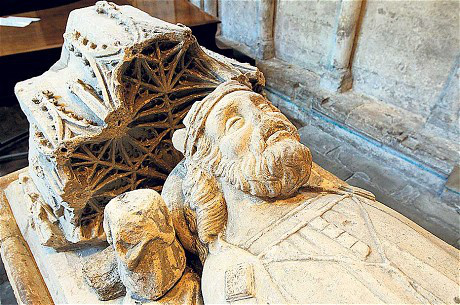 King Athelstan (927-939). Around the year 1450, the second oldest Masonic text – the Cooke Manuscript – traces Masonry back to Jabal, son of Lamech (from Genesis) and tells how this knowledge came to Euclid, from him to the Children of Israel (while they were in Egypt), and so on through an elaborate path to Athelstan. This myth formed the basis for subsequent manuscript constitutions, all tracing Masonry back to biblical times, and fixing its institutional establishment in England during the reign of Athelstan.
King Athelstan (927-939). Around the year 1450, the second oldest Masonic text – the Cooke Manuscript – traces Masonry back to Jabal, son of Lamech (from Genesis) and tells how this knowledge came to Euclid, from him to the Children of Israel (while they were in Egypt), and so on through an elaborate path to Athelstan. This myth formed the basis for subsequent manuscript constitutions, all tracing Masonry back to biblical times, and fixing its institutional establishment in England during the reign of Athelstan.
In France, the 1737 lecture of Chevalier Ramsay maintained that Crusader Masons had revived the Craft with secrets recovered in the Holy Land, under the patronage of both the Knights Templars and the Knights Hospitaller – also known as Knights of St John.
Much more recently, several authors have linked the Templars to the timeline of Freemasonry through the imagery of the carvings in Rosslyn Chapel in Scotland, where the Templars have sought refuge after the violent dissolution of the order started on the 13 October 1307 and completed by 1314 with the execution of their last Grand Master Jacques De Molay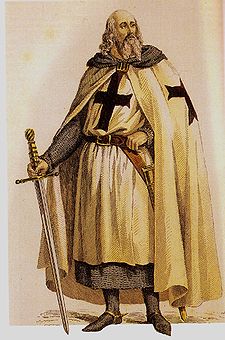 . In the very successful and controversial book The Hiram Key, Robert Lomas and Christopher Knight describe a timeline starting in ancient Egypt and taking in Jesus, the Templars, and Rosslyn before arriving at modern Freemasonry.
. In the very successful and controversial book The Hiram Key, Robert Lomas and Christopher Knight describe a timeline starting in ancient Egypt and taking in Jesus, the Templars, and Rosslyn before arriving at modern Freemasonry.
Rosslyn Chapel was built by the later William St Clair, who brought Europe’s finest masons to Scotland for the purpose, building the nearby village of Roslyn to house them. Even a quick tour of this amazing chapel is enough to show its strong connections to Freemasonry when in the 1400s, Freemasonry was not supposed to be anywhere to be seen, if we believe the historical “orthodox” version. Rosslyn Chapel is not at all Christian, as it is usually described: the symbolism is profusely Egyptian, Celtic, Jewish, Templar and Masonic. The only Christian symbols are Victorian modifications.
In the eastern side of Rosslyn we can see two splendid pillars called the Mason’s pillar and the Apprentice pillar. The official story tells that a Rosslyn master mason went to Rome in order to gather inspiration for the design of the pillars.
But in the meantime, an apprentice in Rosslyn built one on his own. When the m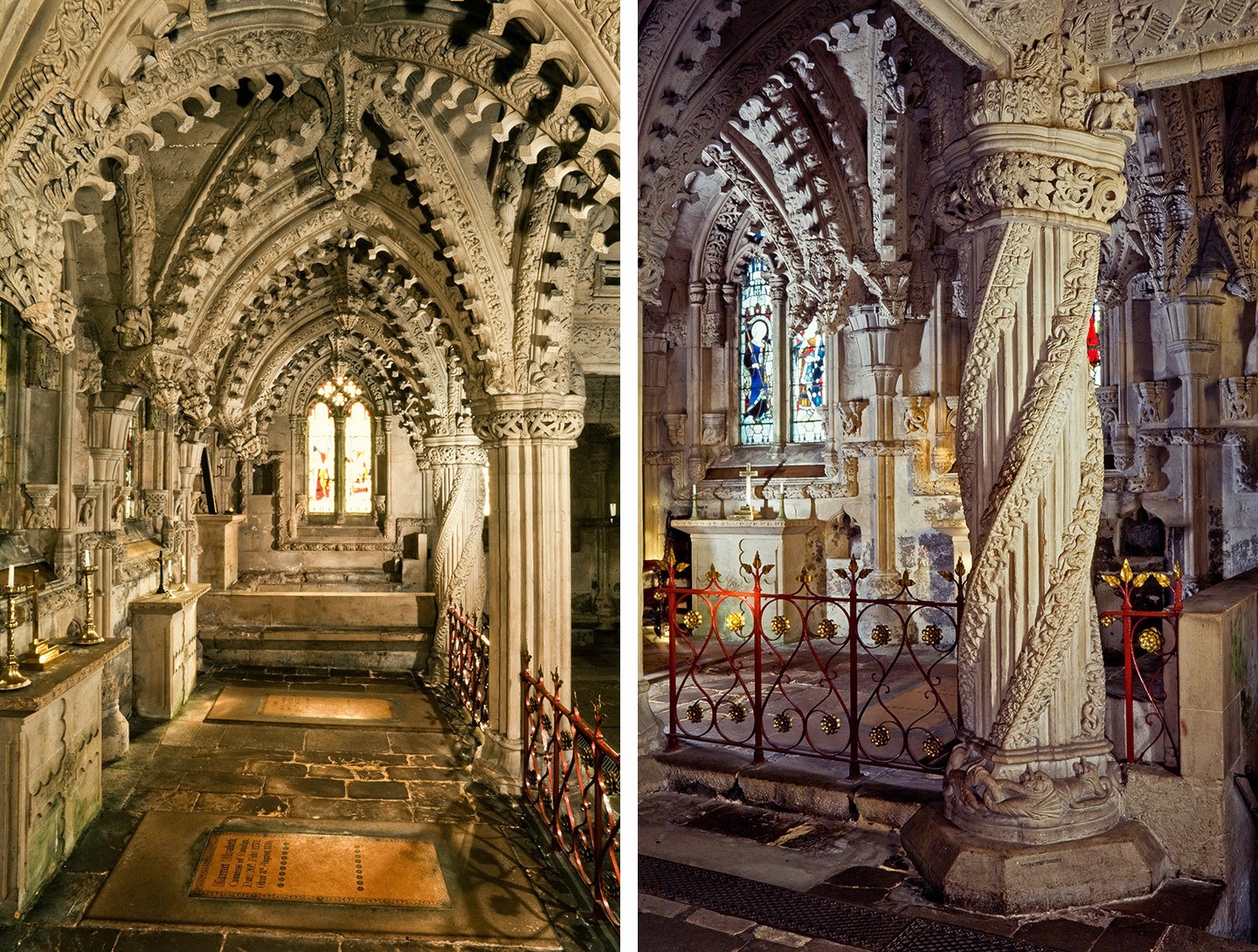 aster came back and found that his pupil’s pillar was much better than anything he could have ever conceived, he killed the apprentice. .. with a mallet hit to his forehead. There is clear evidence that this story is false. William St Clair masterminded and personally supervised any detail of the work. Any carving was to be created in wood first, in order for him to approve it. So it is utterly unthinkable that an apprentice was able to build one of the most important pillars of the chapel out of his own initiative.
aster came back and found that his pupil’s pillar was much better than anything he could have ever conceived, he killed the apprentice. .. with a mallet hit to his forehead. There is clear evidence that this story is false. William St Clair masterminded and personally supervised any detail of the work. Any carving was to be created in wood first, in order for him to approve it. So it is utterly unthinkable that an apprentice was able to build one of the most important pillars of the chapel out of his own initiative.
Continuing to walk in the chapel, we find the Indian maize arch. There wouldn’t be anything special with this, if it were not that the Indian maize plant was only known in North America and unknown in Europe until the 1600s; but unbelievably there it is, clearly sculpted in Rosslyn in the year 1440. This does make sense though, considering there seems to be evidence that the first St Clair Earl of Orkneys had, with Templar money, commissioned a fleet of twelve ships to a voyage to the “new world’ prior to 1400. And a medieval knights image has been found in Westford, Massachusetts; although medieval knights were not around at the time of Christopher Columbus’ discovery, let alone the fact that Christopher Columbus did not even reach the USA. How do we explain that image?
Talking about the American continent, it is impressive what can be found while researching the concept of America: it is actually a very old concept among the Mandaeans.
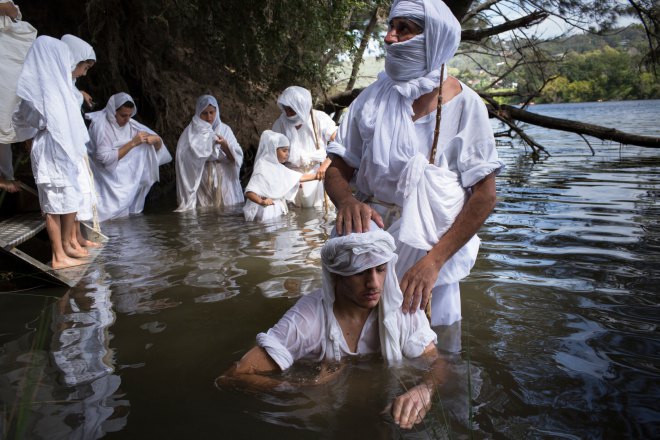 The Mandaeans are an ethno-religious group of Southern Mesopotamia also known, among Iraqi and Iranian Muslims, as Sabians. The Mandaeans are the last surviving baptising sect; they follow the Gnostic belief called Mandaeism. Their belief regularly mentions the star called “Merika` which they placed west, across the ocean, marking a land. The amazing point here is that Mandaeism said so a good 2000 years ago! These are the same Mandaeans who believed St John the Baptist, a Mystery initiate, to be their great prophet, the last prophet in fact; they called him “Son of Man”.
The Mandaeans are an ethno-religious group of Southern Mesopotamia also known, among Iraqi and Iranian Muslims, as Sabians. The Mandaeans are the last surviving baptising sect; they follow the Gnostic belief called Mandaeism. Their belief regularly mentions the star called “Merika` which they placed west, across the ocean, marking a land. The amazing point here is that Mandaeism said so a good 2000 years ago! These are the same Mandaeans who believed St John the Baptist, a Mystery initiate, to be their great prophet, the last prophet in fact; they called him “Son of Man”.
It is certainly only a coincidence that the Templars, during their time in the Middle- East, met the Mandaeans; and that the Knights Hospitaller were also called Knights of St John.
It is a coincidence that St John the Baptist’s life is celebrated on 24 June, which is when the first Grand Lodge met in 1717, the “official” beginning of Freemasonry. It certainly is another coincidence that Freemasons were known, until a short time ago, as “St John’s Men’; and that the Antients installed their Masters during St John’s Day.
So, let’s see what we have so far;
- The Gnostic Mandaeans worship St John the Baptist, a Mystery initiate, and were known by the Templars.
- The Templars have visited America much earlier than its official discovery, which makes sense if we consider their knowledge of Mandaeism and its “Merika” concept.
- The Templars’ American expedition has been organised by St Clair who created Rosslyn, a safe haven for Templars escaping persecution.
- Rosslyn features a Wealth of Gnostic and Masonic symbolism, to include the Hiram Abif legend.
- St Clair and Rosslyn are historically connected to Freemasonry (the St Clair family has been ‘hereditary Scottish Grand Masters’ for three centuries, having given up this right only in 1736).
- Freemasonry officially, started on 24 June, St John’s Day, 1717; which is the same day of the year the Antients installed their Grand Masters.
Now: it is starting to become quite difficult to believe that a bunch of gentlemen met in a pub on whatever random 1717 date, drank beer and created our Fraternity’s first Grand Lodge just out of few random lodges, adapting whatever ritual from cathedral builders they knew and without any spiritual or esoteric connection.
How comes it is that the mythology, the symbolism, the very name and legend of the Master Builder are borrowed from every imaginable source – Kabbalistic, Gnostic, Neo-Platonic, Buddhist, and Egyptian?
I personally believe (and many others like me) that Freemasonry is part of an esoteric line of thought, a stream of spiritual truth passed in a straight line through time immemorial using symbols which are eternal human archetypes.
Borrowing again W.L. Wilmshurst’s words from his enlightening book Meaning of Masonry:
Masonry is a modern perpetuation of great systems of initiation that have existed for the spiritual instruction of men in all parts of the world since the beginning of time. Whether in ancient India, Egypt, Greece, Italy or Mexico, or among the Druids of Europe, temples of initiation have ever existed (…). Our rituals and doctrines are an authentic embodiment of a secret doctrine and a secret process that have always existed (…)
Can we trace this exact line with 100% irrefutable proof? We will probably never be able to. But the evidence we already have is pointing quite clearly to the fact that Freemasonry is very ancient and is a path of the spirit, a way of spiritual and personal betterment. Experiencing our rituals more deeply and progressing in Freemasonry with open hearts and minds, makes us sense the depth of the message, makes us feel it. The Masonic experience becomes so much more alive! It should make us think that retention is a negligible problem for Masonic lodges and organisations oriented towards the spiritual and the esoteric. I think this happens because Freemasonry experienced with such a deeper and all-encompassing approach is far more interesting and fulfilling to the Brethren.
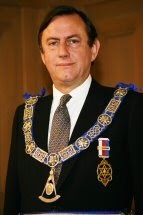 Lord Northampton, former Pro Grand Master and charismatic leader of English Freemasonry for 14 years before his retirement in 2010, said the following at the inauguration of the esoteric study circle called Cornerstone Society:
Lord Northampton, former Pro Grand Master and charismatic leader of English Freemasonry for 14 years before his retirement in 2010, said the following at the inauguration of the esoteric study circle called Cornerstone Society:
It is important that at the centre of Freemasonry there is a core of brethren who do understand the spiritual message that our rituals contain. I am sure that like me there are many who joined Freemasonry as earnest seekers after light and wisdom, only to find that much of the masonry as practiced today in many parts of the world, has forgotten [its] destiny. Nevertheless, it has survived for nearly 400 years and possibly more – and as far as I am concerned, carries the torch for what could loosely be described as the hermetic tradition. It is my fervent hope that through this Society and other similar initiatives it will rediscover its spiritual heritage and become an active catalyst for the transformation of Man’s consciousness.
Published by courtesy of the author WB Corrado Canonici


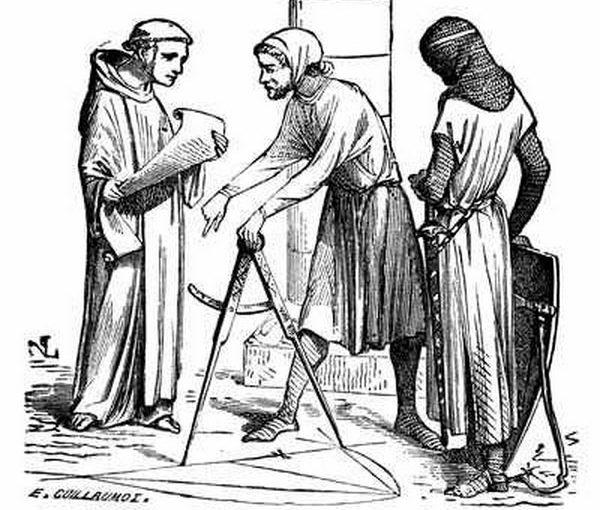
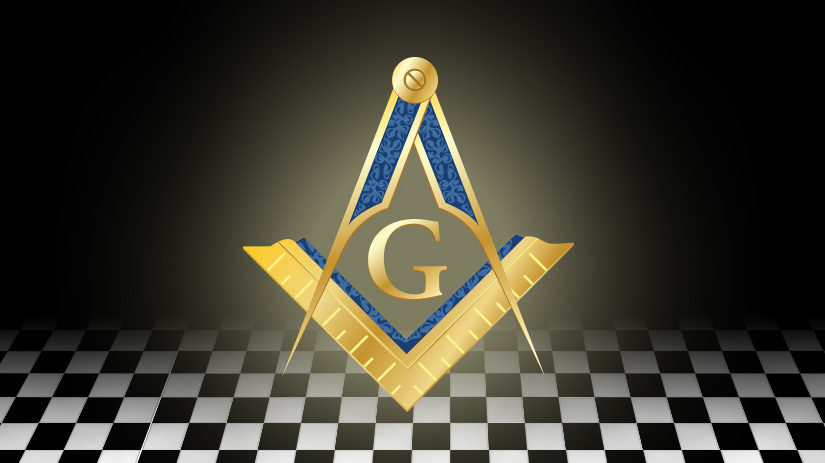
 Dormer Masonic Study Circle. Their esoteric approach is maybe not to everyone’s taste; however it is without doubt that their papers are hugely interesting and thought-provoking to say the least.
Dormer Masonic Study Circle. Their esoteric approach is maybe not to everyone’s taste; however it is without doubt that their papers are hugely interesting and thought-provoking to say the least. King Athelstan (927-939). Around the year 1450, the second oldest Masonic text – the Cooke Manuscript – traces Masonry back to Jabal, son of Lamech (from Genesis) and tells how this knowledge came to Euclid, from him to the Children of Israel (while they were in Egypt), and so on through an elaborate path to Athelstan. This myth formed the basis for subsequent manuscript constitutions, all tracing Masonry back to biblical times, and fixing its institutional establishment in England during the reign of Athelstan.
King Athelstan (927-939). Around the year 1450, the second oldest Masonic text – the Cooke Manuscript – traces Masonry back to Jabal, son of Lamech (from Genesis) and tells how this knowledge came to Euclid, from him to the Children of Israel (while they were in Egypt), and so on through an elaborate path to Athelstan. This myth formed the basis for subsequent manuscript constitutions, all tracing Masonry back to biblical times, and fixing its institutional establishment in England during the reign of Athelstan. . In the very successful and controversial book The Hiram Key, Robert Lomas and Christopher Knight describe a timeline starting in ancient Egypt and taking in Jesus, the Templars, and Rosslyn before arriving at modern Freemasonry.
. In the very successful and controversial book The Hiram Key, Robert Lomas and Christopher Knight describe a timeline starting in ancient Egypt and taking in Jesus, the Templars, and Rosslyn before arriving at modern Freemasonry. aster came back and found that his pupil’s pillar was much better than anything he could have ever conceived, he killed the apprentice. .. with a mallet hit to his forehead. There is clear evidence that this story is false. William St Clair masterminded and personally supervised any detail of the work. Any carving was to be created in wood first, in order for him to approve it. So it is utterly unthinkable that an apprentice was able to build one of the most important pillars of the chapel out of his own initiative.
aster came back and found that his pupil’s pillar was much better than anything he could have ever conceived, he killed the apprentice. .. with a mallet hit to his forehead. There is clear evidence that this story is false. William St Clair masterminded and personally supervised any detail of the work. Any carving was to be created in wood first, in order for him to approve it. So it is utterly unthinkable that an apprentice was able to build one of the most important pillars of the chapel out of his own initiative. The Mandaeans are an ethno-religious group of Southern Mesopotamia also known, among Iraqi and Iranian Muslims, as Sabians. The Mandaeans are the last surviving baptising sect; they follow the Gnostic belief called Mandaeism. Their belief regularly mentions the star called “Merika` which they placed west, across the ocean, marking a land. The amazing point here is that Mandaeism said so a good 2000 years ago! These are the same Mandaeans who believed St John the Baptist, a Mystery initiate, to be their great prophet, the last prophet in fact; they called him “Son of Man”.
The Mandaeans are an ethno-religious group of Southern Mesopotamia also known, among Iraqi and Iranian Muslims, as Sabians. The Mandaeans are the last surviving baptising sect; they follow the Gnostic belief called Mandaeism. Their belief regularly mentions the star called “Merika` which they placed west, across the ocean, marking a land. The amazing point here is that Mandaeism said so a good 2000 years ago! These are the same Mandaeans who believed St John the Baptist, a Mystery initiate, to be their great prophet, the last prophet in fact; they called him “Son of Man”. Lord Northampton, former Pro Grand Master and charismatic leader of English Freemasonry for 14 years before his retirement in 2010, said the following at the inauguration of the esoteric study circle called Cornerstone Society:
Lord Northampton, former Pro Grand Master and charismatic leader of English Freemasonry for 14 years before his retirement in 2010, said the following at the inauguration of the esoteric study circle called Cornerstone Society: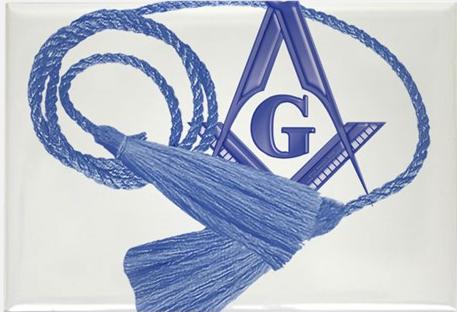
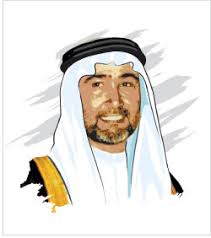
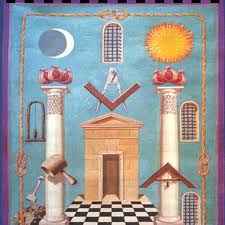 his/her mother at birth. Just as the physical cord, when cut, is replaced by a tie of love between mother and child, so, in one of the most impressive moments of initiation, the cable-tow is removed, because the Brother, by his oath at the Altar of Obligation, is bound by a tie stronger than any physical cable.
his/her mother at birth. Just as the physical cord, when cut, is replaced by a tie of love between mother and child, so, in one of the most impressive moments of initiation, the cable-tow is removed, because the Brother, by his oath at the Altar of Obligation, is bound by a tie stronger than any physical cable.